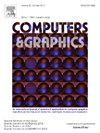Stratiline: A visualization system based on stratified storyline
IF 2.5
4区 计算机科学
Q2 COMPUTER SCIENCE, SOFTWARE ENGINEERING
引用次数: 0
Abstract
In recent years, storyline visualization has garnered considerable attention from the visualization research community. However, previous studies have given little focus to representing the locations of scene and addressing visual clutter issues, especially with larger datasets. In response to this gap, we propose an innovative visual analysis method named Stratiline (short for stratified storyline), which emphasizes multiperspective story data exploration and overview+detail analysis for large-scale datasets. Stratiline introduces a novel framework for calculating the significance of locations, actors, and scenes, providing a mechanism that incorporates user adjustments into the calculation framework to enable multiperspective exploration. Based on this calculation framework, Stratiline offers multiple coordinated views that collaboratively present different perspectives of the story while facilitating rich interactions. Specifically, Stratiline includes time-range drill-down features for overview+detail analysis, while the Storyline View allows for detailed analysis, and the Scene View provides an overview of the entire narrative to help maintain the mental map. The effectiveness of Stratiline is validated through comparative analyses against contemporary storyline designs. Carefully designed case studies illustrate Stratiline’s capability for multiperspective story exploration and large-scale dataset analysis. Quantitative evaluations affirm the stability of our sorting algorithms, which are crucial for time-range drill-down analysis.

求助全文
约1分钟内获得全文
求助全文
来源期刊

Computers & Graphics-Uk
工程技术-计算机:软件工程
CiteScore
5.30
自引率
12.00%
发文量
173
审稿时长
38 days
期刊介绍:
Computers & Graphics is dedicated to disseminate information on research and applications of computer graphics (CG) techniques. The journal encourages articles on:
1. Research and applications of interactive computer graphics. We are particularly interested in novel interaction techniques and applications of CG to problem domains.
2. State-of-the-art papers on late-breaking, cutting-edge research on CG.
3. Information on innovative uses of graphics principles and technologies.
4. Tutorial papers on both teaching CG principles and innovative uses of CG in education.
 求助内容:
求助内容: 应助结果提醒方式:
应助结果提醒方式:


